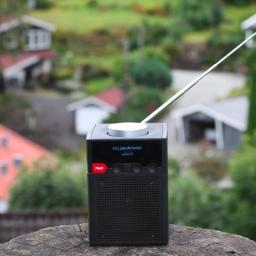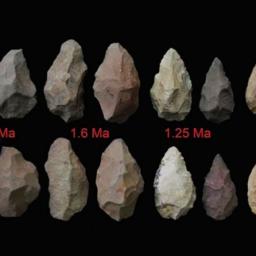
Norway is making an historic move into a new radio era, being the first country in the world to decide upon
an analog switch-off for all major radio channels. Several countries in Europe and Southeast Asia are in similar processes, choosing DAB-technology as the backbone of future radio distribution. Norway began the transition to DAB back in 1995. The DAB-coverage in Norway now exceeds FM-coverage. DAB provides Norway with 22 national channels, as opposed to five channels transmitting nationwide on FM.
"We can finally complete the work that has been on-going for many years. This is the best solution for all listeners throughout Norway, as they now have a better radio." 56 per cent of radio listeners use digital radio every day. 55 per cent of households have at least one DAB radio. While 44 % of listeners only use FM radio daily, according to Digitalradio survey by TNS Gallup. Switch-off starts in Nordland county 11th January 2017 and ends with the northernmost counties Troms and Finnmark 13th December 2017.

The oldest known stone tools in the world were made some 3.3 million years ago, which would make these newly discovered
implements older than modern humans. Archaeologists working in the Kenyan Rift Valley that discovered the tools said the set of 20 stone flakes and anvils are some 700,000 years older than stone tools from Ethiopia that previously held this record. These tools predate the earliest fossils representing our genus, Homo, by 500,000 years. What these tools suggest is that stone tool manufacture didn't begin with Homo as previously held but with a more primitive member of the human family.
Scientists working at the site of Dikika, Ethiopia in 2010 where fossils belonging to Lucy's species had previously turned up said they had recovered 3.4 million year-old animal bones bearing distinctive marks. They argued hominins had made the marks in the course of slicing meat off the bones with stone tools. The claim caused heated debate with some scientists saying the alleged cut marks were instead the result of the bones having been trampled by passing animals. Others suggested they were bite marks from crocodiles.
Worldwide, statistics show that crickets are the most widely cultivated insects for the human diet and are considered the "gateway bug" for people who choose to eat insects. Crickets are readily available in pet stores as food for turtles, frogs, and other pets. They are considered delicacies or snacks for people in many countries. Cricket flour is now commonly found in protein bars, baked goods, and protein powders. Crickets have been touted as much better for the planet-environmentally and financially-than livestock, due to the supposedly more-efficient rate at which they convert feed into body mass. But in reality,
there is very little data to support this.
Researchers measured the biomass output and feed conversion ratios of crickets (Acheta domesticus) that were reared on foods ranging from grain-based to high in cellulose. Crickets fed on processed food waste grew to harvestable size with conversion efficiency similar to industrial-scale production broiler chickens. But over 99 percent of the crickets fed minimally processed, municipal-scale food waste died before reaching a harvestable size. The measurements were made at a much greater population scale and density than any previously reported studies. These feed conversion ratios are much less efficient than those reported from studies conducted at smaller scales and lower population densities.
 Norway is making an historic move into a new radio era, being the first country in the world to decide upon an analog switch-off for all major radio channels. Several countries in Europe and Southeast Asia are in similar processes, choosing DAB-technology as the backbone of future radio distribution. Norway began the transition to DAB back in 1995. The DAB-coverage in Norway now exceeds FM-coverage. DAB provides Norway with 22 national channels, as opposed to five channels transmitting nationwide on FM.
Norway is making an historic move into a new radio era, being the first country in the world to decide upon an analog switch-off for all major radio channels. Several countries in Europe and Southeast Asia are in similar processes, choosing DAB-technology as the backbone of future radio distribution. Norway began the transition to DAB back in 1995. The DAB-coverage in Norway now exceeds FM-coverage. DAB provides Norway with 22 national channels, as opposed to five channels transmitting nationwide on FM.